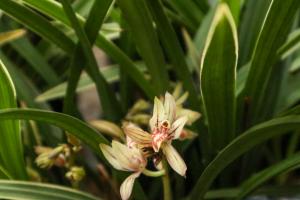How to Make Pool Water Safe for Plants
Swimming pools are a great source of relaxation and fun, but the chemicals used to keep the water clean and clear can be harmful to the plants surrounding the pool. However, with a few simple tips and tricks, you can minimize the impact of pool water on your garden or landscape. Here are some ways on how to make pool water safe for plants.
1. Check the Chemical Balance of the Pool Water
Before you start using pool water for your plants, make sure to check the chemical balance of the water. Chlorine and other chemicals used in pools can be harmful to plants, but the levels that are safe for swimmers might also be safe for nearby plants. Generally, a pH level of 7.0 to 7.8 is considered safe for plants. Anything higher or lower than this range can damage plants.
2. Dilute the Pool Water with Tap Water
If you’re concerned about the chemical content of the pool water, one way to make it safer for plants is to dilute it with tap water. You can mix the pool water with tap water in a ratio to make it safe for plants. For instance, mixing one part pool water with four parts tap water is a safe ratio that will not harm plants.
3. Let Pool Water Age Before Using
Another way to make pool water safer for plants is to let it age before using it. This means letting the pool water sit out for a few days to a week before using it on plants. During this time, the chemicals in the water will dissipate, making it safer for plants to absorb. However, make sure to check the pH level before using the water to ensure that it’s safe for plants.
4. Use a Natural Pool
A natural pool is an eco-friendly and natural alternative to traditional pools. It uses aquatic plants and beneficial bacteria to filter the water, making it safe for swimming and plants. A natural pool can be an excellent addition to your landscape design, and it provides a source of irrigation water for your plants without the use of chemicals.
5. Don’t Water Plants with Chlorinated Pool Water
Chlorine is a powerful chemical that can be harmful to plants. It can cause the leaves to turn yellow or brown and can also interfere with the plant’s ability to absorb nutrients. If you’re using chlorine in your pool water, avoid using it to water your plants. Instead, use tap water or pool water that has been treated with chemicals that are safe for plants.
Conclusion
With these simple tips and tricks, you can make pool water safe for plants. Whether you choose to dilute the pool water, let it age, or use a natural pool, it’s essential to ensure that the chemical balance of the water is safe for plants. By taking care of your plants and minimizing the impact of pool water on them, you can create a beautiful and healthy landscape around your pool.

 how many times do yo...
how many times do yo... how many planted tre...
how many planted tre... how many pine trees ...
how many pine trees ... how many pecan trees...
how many pecan trees... how many plants comp...
how many plants comp... how many plants can ...
how many plants can ... how many plants and ...
how many plants and ... how many pepper plan...
how many pepper plan...































